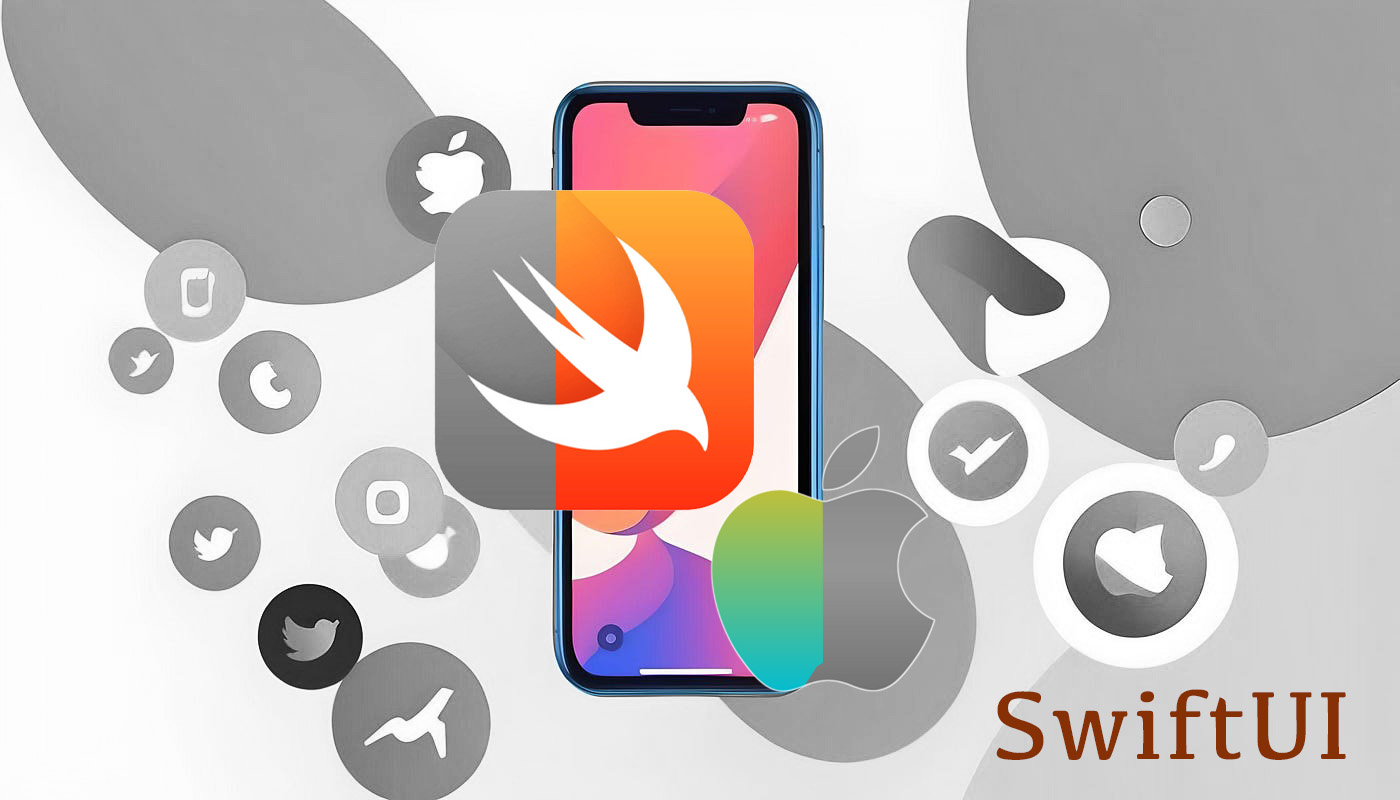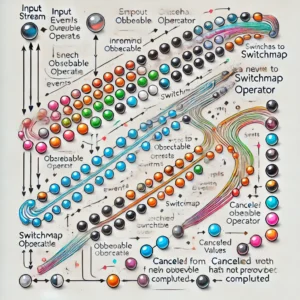Introduction
In the ever-evolving landscape of iOS development, understanding different UI paradigms is crucial for creating efficient, maintainable, and visually appealing applications. Two primary approaches have emerged over the years: Imperative UI and Declarative UI. These paradigms represent fundamentally different ways of thinking about and implementing user interfaces.
Imperative UI, exemplified by Apple’s UIKit framework, has been the cornerstone of iOS development since the platform’s inception. It provides developers with fine-grained control over the UI elements and their behaviors, allowing for precise customization and optimization.
On the other hand, Declarative UI, represented by the newer SwiftUI framework, offers a more modern and streamlined approach to building user interfaces. It focuses on describing what the UI should look like and how it should behave, rather than detailing the step-by-step process of creating and updating it.
As an iOS developer, whether you’re a seasoned professional or just starting your journey, it’s essential to understand both these paradigms. Here’s why:
- Framework Choices: Knowing the strengths and weaknesses of both UIKit and SwiftUI allows you to make informed decisions about which framework to use for your projects.
- Code Maintainability: Understanding these paradigms helps in writing cleaner, more maintainable code, regardless of the framework you choose.
- Performance Optimization: Each approach has its own performance characteristics, and understanding them can help you optimize your apps more effectively.
- Future-Proofing Skills: While UIKit has been the standard for years, SwiftUI represents Apple’s vision for the future of UI development. Familiarity with both ensures you’re prepared for current and future projects.
- Legacy Code Management: Many existing iOS apps are built with UIKit. Understanding both paradigms is crucial for maintaining and updating these apps, especially when integrating newer SwiftUI components.
In this blog post, I will take a deep dive into both Imperative and Declarative UI paradigms, using UIKit and SwiftUI as our primary examples. We’ll explore their core concepts, compare their approaches to common UI challenges, and discuss scenarios where each might be the preferable choice.
By the end of this article, you’ll have a comprehensive understanding of these two UI paradigms, equipping you with the knowledge to make informed decisions in your iOS development journey. Whether you’re building a new app from scratch or maintaining an existing codebase, the insights shared here will prove invaluable in your day-to-day development tasks.
Let’s embark on this exploration of Imperative and Declarative UI, and uncover the power and potential of UIKit and SwiftUI in modern iOS development.
Imperative UI: The UIKit Way
Imperative UI, as implemented in UIKit, is a programming paradigm where you explicitly define the sequence of steps to create and manipulate UI elements. This approach has been the backbone of iOS development since the platform’s inception, offering developers granular control over the user interface.
Definition and Core Concepts: Imperative programming in UI development involves directly manipulating the view hierarchy, manually managing the state of UI components, and explicitly defining how the interface should change in response to events or data updates. With UIKit, you’re essentially giving step-by-step instructions to the system on how to build and update the UI.
Key Characteristics of Imperative Programming in UIKit:
- Explicit Control: Developers have direct control over every aspect of the UI.
- Mutable State: UI elements are typically mutable, allowing for direct modifications.
- Event-Driven: UI updates are often triggered by specific events or user actions.
- Procedural: UI construction and updates follow a procedural, step-by-step approach.
Example: Creating a Simple Button with UIKit
Let’s walk through the process of creating a button using UIKit:
class ViewController: UIViewController {
override func viewDidLoad() {
super.viewDidLoad()
// Create the button
let button = UIButton(frame: CGRect(x: 100, y: 100, width: 200, height: 50))
// Set the button title
button.setTitle("Tap me", for: .normal)
// Set the button's background color
button.backgroundColor = .blue
// Set the button's title color
button.setTitleColor(.white, for: .normal)
// Round the button corners
button.layer.cornerRadius = 10
// Add a target action for the button tap
button.addTarget(self, action: #selector(buttonTapped), for: .touchUpInside)
// Add the button to the view hierarchy
view.addSubview(button)
}
@objc func buttonTapped() {
print("Button was tapped!")
}
}In this example, we can see several key aspects of imperative UI programming:
- Explicit Creation: We manually create the
UIButtoninstance, specifying its frame. - Property Setting: We explicitly set various properties like title, colors, and corner radius.
- Event Handling: We manually add a target-action for the button tap event.
- View Hierarchy Management: We explicitly add the button to the view hierarchy.
Pros of Using UIKit:
- Fine-grained Control: Developers have precise control over every aspect of the UI.
- Performance Optimization: Direct manipulation allows for fine-tuned performance optimizations.
- Mature Ecosystem: UIKit has a vast collection of libraries, tools, and community resources.
- Familiarity: Many developers are already proficient in UIKit, making it easier to find experienced talent.
Cons of Using UIKit:
- Verbosity: UIKit often requires more code to achieve the same result compared to declarative approaches.
- State Management Complexity: Keeping the UI in sync with the app’s state can become complex in large applications.
- Steeper Learning Curve: Newcomers might find the amount of boilerplate code and concepts overwhelming.
- More Prone to Bugs: The manual nature of UI updates can lead to inconsistencies if not managed carefully.
Advanced UIKit Concepts:
- Auto Layout: While our example used a frame-based layout, most modern UIKit apps use Auto Layout for responsive designs:
button.translatesAutoresizingMaskIntoConstraints = false
NSLayoutConstraint.activate([
button.centerXAnchor.constraint(equalTo: view.centerXAnchor),
button.centerYAnchor.constraint(equalTo: view.centerYAnchor),
button.widthAnchor.constraint(equalToConstant: 200),
button.heightAnchor.constraint(equalToConstant: 50)
])- UIStackView: For more complex layouts, UIKit provides container views like UIStackView:
let stackView = UIStackView()<br>stackView.axis = .vertical<br>stackView.spacing = 10<br>stackView.addArrangedSubview(button1)<br>stackView.addArrangedSubview(button2)<br>view.addSubview(stackView)- UIViewPropertyAnimator: For smooth UI transitions, UIKit offers powerful animation tools:
let animator = UIViewPropertyAnimator(duration: 0.3, curve: .easeInOut) {
self.button.alpha = 0.5
self.button.transform = CGAffineTransform(scaleX: 1.2, y: 1.2)
}
animator.startAnimation()While UIKit’s imperative approach requires more explicit code, it offers developers a high degree of control and flexibility. This can be particularly beneficial for complex UI interactions, custom animations, and when fine-tuned performance is crucial. As we move forward in this article, we’ll see how this approach compares to the declarative paradigm offered by SwiftUI.
Declarative UI: The SwiftUI Approach
Declarative UI, as implemented in SwiftUI, represents a paradigm shift in iOS development. Instead of imperatively describing the steps to create a UI, developers declare what the UI should look like and how it should behave. SwiftUI, introduced by Apple in 2019, embodies this approach, offering a more intuitive and concise way to build user interfaces.
Definition and Core Concepts: In declarative programming for UI, you describe the desired state of your interface, and the framework takes care of the steps needed to achieve that state. SwiftUI manages the view hierarchy, handles state changes, and automatically updates the UI when the underlying data changes.
Key Characteristics of Declarative Programming in SwiftUI:
- State-Driven: UI is a function of state, automatically updating when state changes.
- Composable: Complex UIs are built by combining smaller, reusable components.
- Declarative Syntax: You describe what you want, not how to create it.
- Reactive: The UI reacts to data changes automatically.
Example: Creating a Simple Button with SwiftUI
Let’s recreate the button we made with UIKit, this time using SwiftUI:
import SwiftUI
struct ContentView: View {
var body: some View {
Button(action: {
print("Button was tapped!")
}) {
Text("Tap me")
.foregroundColor(.white)
.frame(width: 200, height: 50)
.background(Color.blue)
.cornerRadius(10)
}
}
}
In this SwiftUI example, we can observe several key aspects of declarative UI programming:
- Concise Syntax: The entire button is created in just a few lines of code.
- Composition: The button’s appearance is built by composing multiple view modifiers.
- Built-in State Management: SwiftUI handles the button’s state changes automatically.
- Implicit View Hierarchy: We don’t need to explicitly add the button to a view hierarchy.
Advantages of Using SwiftUI:
- Rapid Development: Less boilerplate code leads to faster development cycles.
- Automatic Updates: UI automatically stays in sync with the app’s state.
- Preview Canvas: Real-time preview of UI changes in Xcode.
- Cross-Platform: Easier to create UIs that work across iOS, macOS, watchOS, and tvOS.
- Declarative Syntax: More intuitive and easier to read code.
Challenges of Using SwiftUI:
- Learning Curve: Developers familiar with UIKit need to adapt to a new paradigm.
- Limited Customization: Some complex UI customizations may be harder to achieve.
- Evolving Framework: As a newer framework, SwiftUI is still evolving and may have limitations.
- iOS Version Requirement: Only available on iOS 13 and later.
Advanced SwiftUI Concepts:
- State Management: SwiftUI provides several property wrappers for state management:
struct ContentView: View {
@State private var isOn = false
var body: some View {
Toggle("Switch", isOn: $isOn)
.padding()
}
}- ObservableObject for Complex State: For more complex state management, you can use
ObservableObject:
class UserSettings: ObservableObject {
@Published var username = "Guest"
}
struct ContentView: View {
@ObservedObject var settings = UserSettings()
var body: some View {
TextField("Username", text: $settings.username)
}
}- Custom ViewModifier: You can create reusable UI components using custom view modifiers:
struct PrimaryButtonStyle: ViewModifier {
func body(content: Content) -> some View {
content
.foregroundColor(.white)
.padding()
.background(Color.blue)
.cornerRadius(10)
}
}
Button("Tap me") {
print("Button tapped!")
}
.modifier(PrimaryButtonStyle())- Animations: SwiftUI makes animations remarkably simple:
struct ContentView: View {
@State private var scale: CGFloat = 1.0
var body: some View {
Button("Animate") {
withAnimation(.spring()) {
self.scale += 0.2
}
}
.scaleEffect(scale)
}
}- Combining SwiftUI with UIKit: SwiftUI provides ways to integrate UIKit views when needed:
struct MapView: UIViewRepresentable {
func makeUIView(context: Context) -> MKMapView {
MKMapView()
}
func updateUIView(_ uiView: MKMapView, context: Context) {}
}SwiftUI’s declarative approach offers a more intuitive way to build UIs, with less code and automatic handling of many complexities. It excels in rapid prototyping and building consistent UIs across Apple platforms. However, it’s important to note that while SwiftUI is powerful and continually improving, there are still scenarios where UIKit’s maturity and flexibility might be preferable, especially for complex, highly customized interfaces or when supporting older iOS versions.
As we continue through this article, we’ll explore how these two approaches compare in various real-world scenarios, helping you make informed decisions about which to use in your projects.
Comparing Imperative and Declarative Approaches
To truly understand the differences between UIKit’s imperative approach and SwiftUI’s declarative approach, let’s dive into specific areas where these paradigms diverge significantly.
State Management:
UIKit (Imperative):
- Manual state tracking and UI updates
- Often uses properties and methods to manage state
- Requires explicit UI updates when state changes
SwiftUI (Declarative):
- Automatic UI updates based on state changes
- Uses property wrappers like @State, @Binding, @ObservedObject
- UI automatically reflects the current state
Layout and Constraints:
UIKit (Imperative):
- Uses Auto Layout system
- Constraints are often set programmatically or in Interface Builder
- Can be verbose for complex layouts
SwiftUI (Declarative):
- Built-in layout system with prebuilt containers (HStack, VStack, ZStack)
- More intuitive and concise layout definitions
- Responsive layouts with less code
Code Organization and Reusability:
UIKit (Imperative):
- Often uses subclassing for custom components
- Delegate pattern for communication between objects
- Can lead to deep class hierarchies
SwiftUI (Declarative):
- Promotes composition over inheritance
- Uses structs and protocols extensively
- Easier to create and reuse small, focused components
Learning Curve and Development Speed:
UIKit (Imperative):
- Steeper learning curve for beginners
- More boilerplate code required
- Faster for developers already familiar with UIKit
- Better for fine-grained control and optimization
SwiftUI (Declarative):
- Easier for beginners to grasp basic concepts
- Rapid prototyping and development
- Shorter learning curve for basic to intermediate apps
- May require additional learning for complex custom UIs
Performance Considerations:
UIKit (Imperative):
- Mature framework with well-understood performance characteristics
- Allows for fine-grained performance optimizations
- Better for complex, highly customized interfaces
SwiftUI (Declarative):
- Generally good performance for most use cases
- Automatic performance optimizations by the framework
- May have limitations for extremely complex or unconventional UIs
Testability:
UIKit (Imperative):
- Established testing practices and tools
- Can be challenging to test UI logic separately from business logic
SwiftUI (Declarative):
- Easier to test UI components in isolation
- State-based testing is more straightforward
Integration with Existing Codebases:
UIKit (Imperative):
- Seamless integration with existing UIKit-based projects
- Large ecosystem of third-party libraries and tools
SwiftUI (Declarative):
- Can be integrated gradually into UIKit projects
- Provides bridging options (UIViewRepresentable, UIHostingController)
Example of integrating SwiftUI view in UIKit:
let swiftUIView = UIHostingController(rootView: SwiftUIContentView())
addChild(swiftUIView)
view.addSubview(swiftUIView.view)
swiftUIView.didMove(toParent: self)In conclusion, both UIKit and SwiftUI have their strengths and ideal use cases. UIKit offers more control and is better suited for complex, highly customized interfaces or when supporting older iOS versions. SwiftUI, on the other hand, excels in rapid development, code readability, and cross-platform consistency. As iOS development evolves, understanding both paradigms allows developers to choose the best tool for each specific project or component.
Conclusion
The journey through Imperative and Declarative UI paradigms, as exemplified by UIKit and SwiftUI respectively, reveals the evolving landscape of iOS development. While UIKit’s imperative approach offers fine-grained control and a mature ecosystem, SwiftUI’s declarative syntax brings simplicity and rapid development to the forefront.
Each approach has its strengths: UIKit excels in complex, highly customized interfaces and performance-critical scenarios, while SwiftUI shines in rapid prototyping, code readability, and cross-platform development. The choice between them often depends on project requirements, team expertise, and target iOS versions.
As iOS development continues to evolve, it’s becoming increasingly valuable for developers to be proficient in both paradigms. This dual knowledge allows for informed decision-making, efficient problem-solving, and the ability to leverage the best of both worlds in hybrid applications.
Ultimately, understanding both imperative and declarative UI development equips iOS developers with a versatile toolkit, enabling them to create more robust, efficient, and user-friendly applications in an ever-changing mobile landscape.
Further Reading and Useful Links
- Apple’s Official Documentation:
- WWDC Sessions:
- Books:
- “SwiftUI by Tutorials” by raywenderlich.com
- “Mastering iOS 14 Programming” by Mario Eguiluz Alebicto
- Online Courses:
- SwiftUI Fundamentals on Pluralsight
- iOS & Swift – The Complete iOS App Development Bootcamp on Udemy
- Blogs and Articles:
- Hacking with Swift – Tutorials for both UIKit and SwiftUI
- SwiftUI vs UIKit: Which Should You Learn? by Paul Hudson
- GitHub Repositories:
- Awesome SwiftUI – A curated list of SwiftUI resources
- Awesome iOS – A curated list of awesome iOS ecosystem
- Community Forums:
- Swift Forums
- r/iOSProgramming on Reddit
- Performance Comparisons:
These resources provide a wealth of information for developers looking to deepen their understanding of both UIKit and SwiftUI, offering practical examples, best practices, and insights into the future of iOS development.






